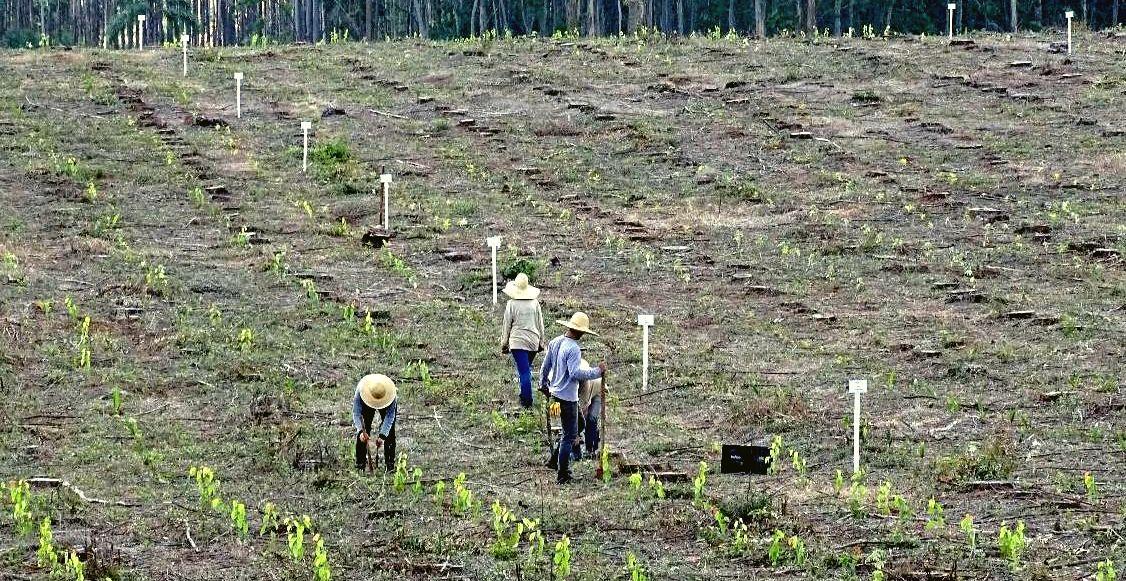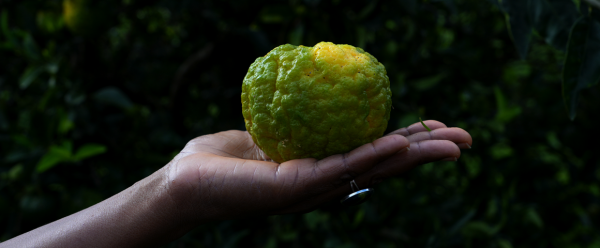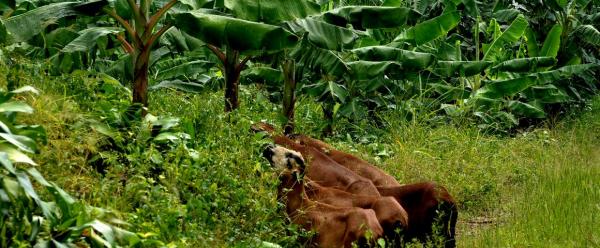Science at work 19 December 2025
- Home
- CIRAD news
- News
- Forest restoration: how to go about it
Forest restoration is on the rise, but how we go about it is crucial

Well-thought-out forest restoration schemes are increasingly important, to bring back to life millions of hectares of degraded and deforested land © Eder Araujo da Silva
Politicians have long been fond of tree-planting ceremonies, but today, well-thought-out forest restoration schemes are increasingly important. Indeed, a host of international initiatives aim to substantially increase the world’s forest area by bringing back to life millions of hectares of degraded and deforested land.
Launched in 2017, the United Nations’ Strategic Plan for Forests is perhaps one of the most emblematic schemes, setting out to boost global forest coverage by 3% by 2030, equivalent to 120 million hectares or an area more than twice the size of France. Encompassing 61 countries, the Bonn Challenge has pledged to restore more than double this, at 350 million hectares by the same year.
These much-needed efforts raise important questions for forest ecologists: How can we ensure that restored forests deliver the range of services we expect of them? How can we make them resilient so that they continue to function well in the future, in particular given ongoing climate change? And how can restoring forests provide an opportunity to help solve other critical global challenges, such as combating the loss of biodiversity and environmental degradation?
Closing the gap in forest restoration
The leap from policymakers’ pledges to effective forest restoration by practitioners needs support from science. The first challenge is to identify the areas on earth that have the largest potential to accommodate all these additional trees. This requires advanced landscape planning, reconciling different perspectives, such as:
- Securing rising demands for food production.
- Avoiding biodiversity-rich areas such as extensively managed grasslands, which should not be converted to forests even though they are potentially suitable for tree growth.
- Acknowledging the economic and cultural values linked to land uses other than forest.
Scientists are developing detailed maps showing this global restoration potential outside of existing forests, agricultural land, and urban areas. Still, there is a debate about how much of this land should be turned over to forests.
Once we determine where to prioritise forest restoration, the next challenge is to decide what these forests should look like. Forest plantations will have an important share in the restoration efforts. Forests now cover about 30% of global land surfaces, and according to the Global Forest Resources Assessment (FAO 2020), planted forests already represent 290 million ha. This is about 7% of the global forest area and it provides nearly 50% of harvested timber.
A crucial question for forest managers is which tree species should be planted, as the trees will form the future forest for decades to come. They should thus provide the largest benefits in terms of the services we want them to deliver, such as strong growth potential, high carbon sequestration, and optimal support of biodiversity. At the same time, they need to be able to withstand the 21st century’s rising environmental challenges – including climate change. The trees will need, for instance, to be able to take on unprecedented droughts, such as the ones seen in spring and summer 2022 in many regions of Europe.
The catch is that there are no single tree species that combines all of these features, so that it ultimately comes down to trade-offs between criteria when choosing between different types of trees for reforestation.
Science guides toward diverse plantations
Until now, most large-scale tree-planting schemes reproduced monocultural systems, almost exclusively relying upon a handful of commercial tree species – typically pines, spruce, or eucalypts. However, the existing monocultures give us little information about how we can design, plant and manage other types of forests that will be resilient to environmental stresses. Fortunately, scientists worldwide have established experimental tree plantations that can be particularly informative.
Our team’s experiments, part of the global Tree Diversity Network TreeDivNet, were all rigorously designed to study how well individual tree species and, especially, mixtures of different tree species grow. Still relatively young, these experiments currently cover only trees up to 20 years old and are thus most relevant for the initial stages of forest development. Still, these stages are the most critical regarding successful establishment and growth after planting.
The current focus of our work is on tree growth. For example, do trees grow faster if they share growth space with other species that use resources differently? We also look at the resistance of many species of trees to climate variability and other threats. Teams associated with TreeDivNet have sites in most major climatic regions of the world, including the boreal and temperate zones, the Mediterranean, and the tropics. Together, they cover more than 850 hectares – the equivalent to 1,200 soccer fields – and represent one of the most extensive ecological research facilities in the world. Nearly 30 experiments are testing the performance of around 250 species. All are gathering crucial data that will help inform us about what mixes of species can best achieve multiple objectives and have the highest resilience to threats.
Decision trees
To help us adapt to a warming planet, TreeDivNet Scientists are teaming up to investigate the optimal combinations of tree species that will allow tree plantations to thrive in a changing and uncertain climate. Their potential for climate mitigation and adaptation will depend on how young trees can survive climate extremes, particularly drought, fire and threats such as bark beetles.
Our work has provided survival assessments for hundreds of thousands of trees in their first years, and early results reveal that mixed plantings are less at risk of complete failure. In contrast, monocultures that may be more productive are often less resilient, and may not withstand periods of extreme stress. The diffusion of tree mortality risk in mixtures, known as the “portfolio” or “insurance effect”, may offer an adaptation pathway to forest managers striving to secure forest persistence under uncertain future conditions. As the term indicates, it’s akin to how we diversify our economic portfolio to ensure more stable long-term revenues.
Trees being studied are subjected to thorough check-ups using advanced techniques. X-ray scans of wood cores identify trees that have experienced delayed growth because of drought or other threats. Looking at carbon isotopes in wood can reveal whether trees have experienced stress from drought, which reduces photosynthesis during that time. The ambition is to summarise these measurements in ecological profiles of tree species, supporting forest managers’ decisions between different tree species combinations that can cope with the challenges ahead.
Making the science practical
Academics perform much of the research work, but a key ambition is to make the science practical so that it can serve as a science-based guide for forest managers in the field. In the months ahead, we will be looking to reach out and build on scientific advances to help develop workable afforestation practices that landowners and land users can widely adopt.
Also crucial is forming enduring alliances with land users, research groups, and forestry organisations worldwide. These partnerships can provide the combined impetus for accelerating a nature-based transition from monocultures of few commercial species to rich, biodiverse plantations that are well adapted to many stressors, particularly climate change, for decades to come.
The research project “Tree bodyguards” of which this publication is part was supported by the BNP Paribas Foundation as part of the Climate and Biodiversity Initiative programme



























